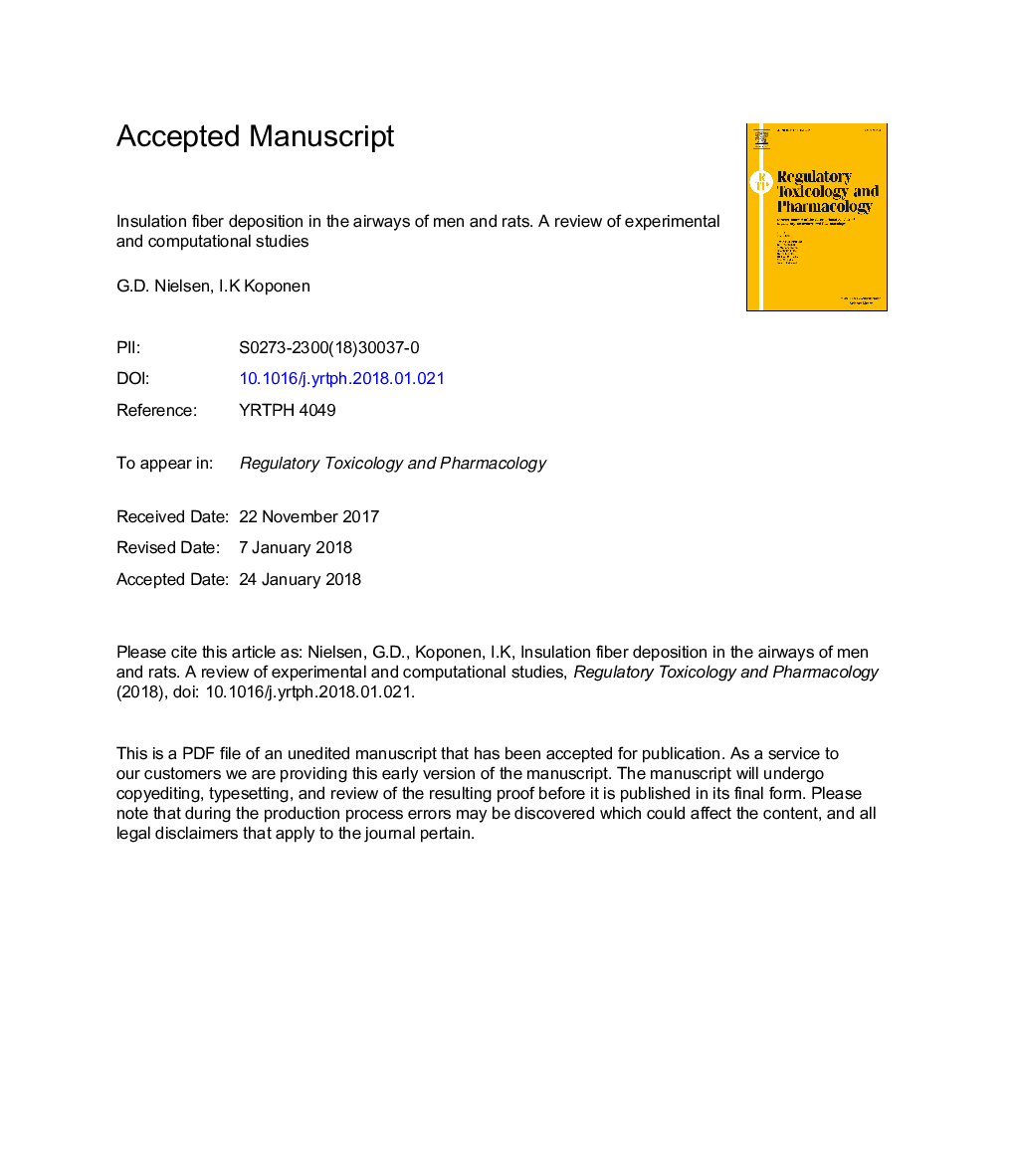| Article ID | Journal | Published Year | Pages | File Type |
|---|---|---|---|---|
| 8551598 | Regulatory Toxicology and Pharmacology | 2018 | 81 Pages |
Abstract
The typical insulation rock, slag and glass wool fibers are high volume materials. Current exposure levels in industry (generallyâ¯â¤â¯1 fiber/cm3 with a median diameter â¼1â¯Î¼m and length â¥10â¯Î¼m) are not considered carcinogenic or causing other types of severe lung effects. However, epidemiological studies are not informative on effects in humans at fiber levels >1 fiber/cm3. Effects may be inferred from valid rat studies, conducted with rat respirable fibers (diameterâ¯â¤â¯1.5â¯Î¼m). Therefore, we estimate delivery and deposition in human and rat airways of the industrial fibers. The deposition fractions in humans head regions by nasal (â¼0.20) and by mouth breathing (â¤0.08) are lower than in rats (0.50). The delivered dose into the lungs per unit lung surface area during a 1-day exposure at a similar air concentration is estimated to be about two times higher in humans than in rats. The deposition fractions in human lungs by nasal (â¼0.20) and by mouth breathing (â¼0.40) are higher than in rats (â¼0.04). The human lung deposition may be up to three times by nasal breathing and up to six times higher by oral breathing than in rats, qualifying assessment factor setting for deposition.
Related Topics
Life Sciences
Environmental Science
Health, Toxicology and Mutagenesis
Authors
G.D. Nielsen, I.K Koponen,
